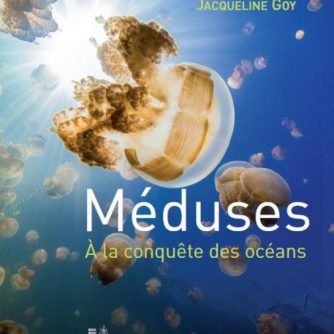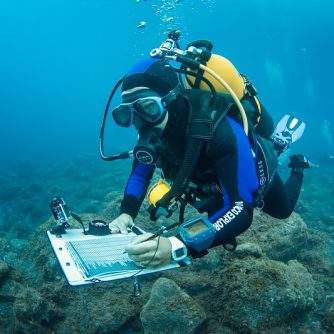Robust to the point of immortality
- Home
- Actualités
- Robust to the point of immortality
Reproduction in jellyfish, the beginning of sexual reproduction
Jellyfish represent the first manifestation of sexuality in multicellular animals; there are male and female jellyfish, their gonads (sexual organs) produce sperm and eggs. The early stages of development are identical regardless of the type of jellyfish.
A little vocabulary
The fixed stage is called hydrarium,
some jellyfish have only a fixed stage.
The free stage is called jellyfish,
which creates confusion with the jellyfish animal.
SEXUAL REPRODUCTION
Most of the time, the reproductive cells are discharged directly into the sea where fertilization takes place.
But in some species of jellyfish, fertilization is internal, which means that sperm released into the sea is ingested by the females and goes to join the eggs to fertilize them. The egg is then evacuated through the mouth, as in Pelagia noctiluca.
Some species are hermaphroditic and emit male and female sex cells, as in Chrysaora hysoscella, a very large jellyfish from the Atlantic coast.
After fertilization, the egg evolves within a few hours into a ciliated larva called a planula.
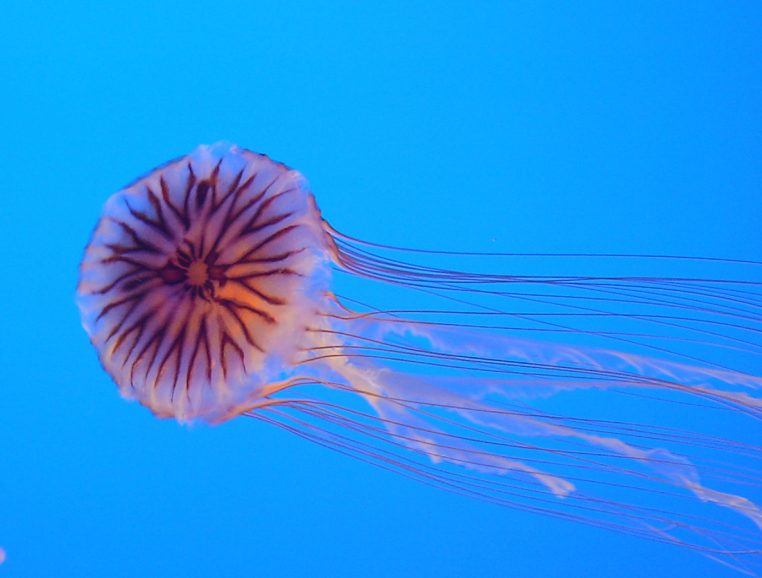
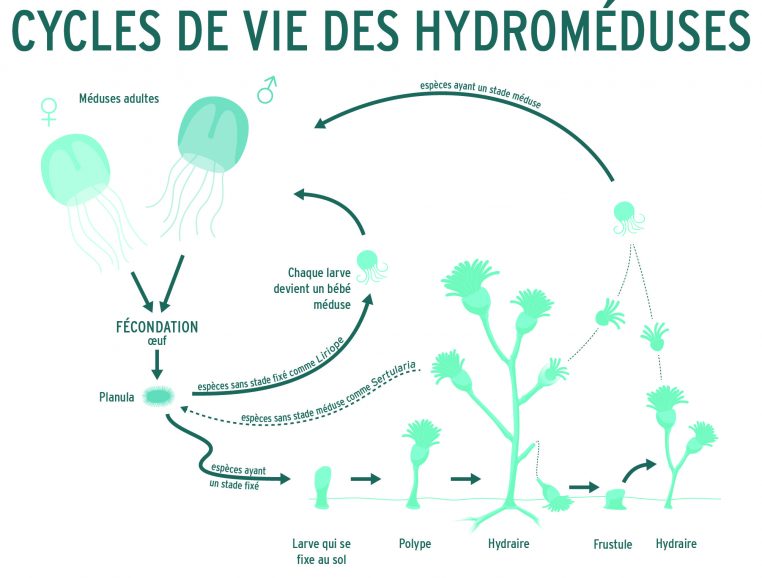
BOURGEONNEMENT FOR HYDROMEDUSES
Generally in Hydromedus, the planula falls to the bottom, settles there and is transformed into a small polyp with stinging tentacles and a single central orifice, which is both mouth and anus.
This polyp will immediately produce buds by asexual multiplication, each bud releasing a medusa.
Some buds may break off and produce a new colony.
There are always exceptions with species that do not have a fixed stage like Liriope or species that do not have a free stage (medusa stage) like Sertularia.
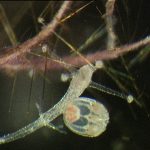
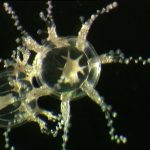
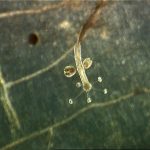
Life cycle of the hydromedusa Cladonema radiatum: polyp and buds, young jellyfish.
© Microaquarium – Institut océanographique
STROBILATION FOR SCYPHOMEDUS
In the Scyphomedus, the planula also falls to the bottom, settles there and becomes a polyp of another form, called a scyphistome, which can also bud and form a small colony, but most of the time these forms are solitary.
Furrows appear on the upper part of the scyphistome forming a pile of plates, this is strobilation. The first segment is released by violent contractions and so on, and these small jellyfish called ephyrules, grow and become adult sexed jellyfish.
In cubomedus, the spermatozoa, grouped in a pouch, the spermatophore, are deposited by the male’s mouth on a tentacle of the female, which collects them through its own mouth. Fertilization takes place in the stomach pouches. The polyp resulting from the planula has tentacles with swollen ends (capes), it crawls on the bottom before fixing itself, then metamorphoses completely to give a single medusa.
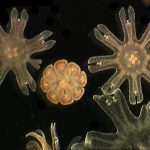
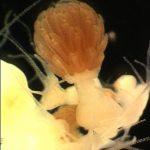
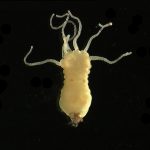
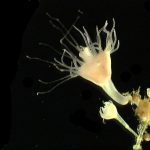
Life cycle of the scyphomedusa Aurelia aurita: polyps, scyphistome, strobilus, ephyrules.
Microaquarium – Oceanographic Institute
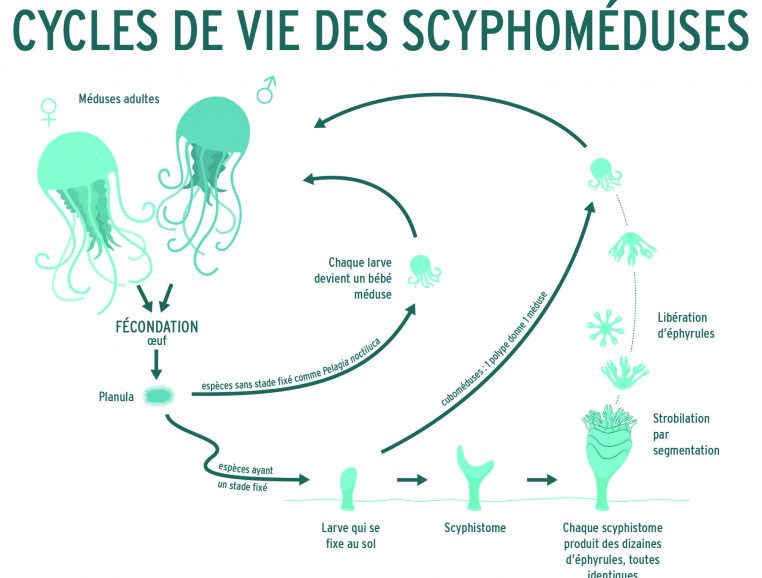
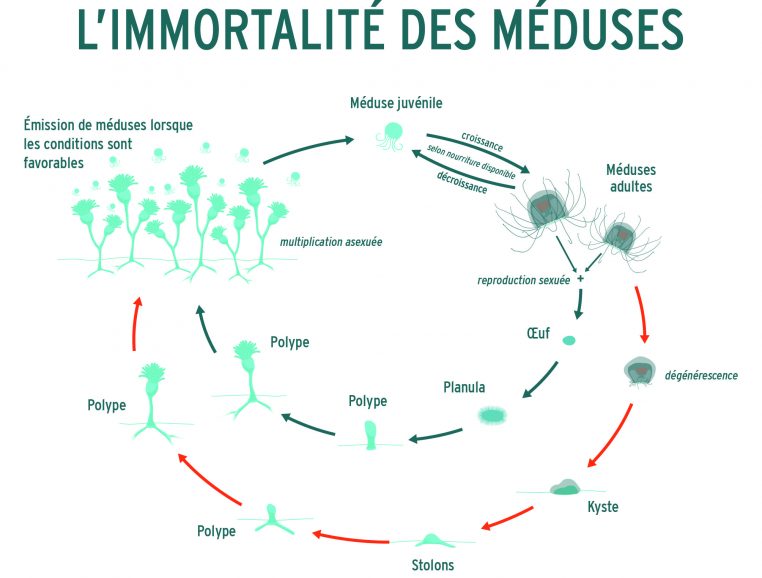
to rejuvenate or to become immortal
When food becomes scarce, jellyfish are able to shrink, reducing their size dramatically and even consuming their newly produced gonads. They thus become juveniles again.
But for some species, such as Turritopsis nutricula, the dying jellyfish may degenerate into a cyst that will develop back into a polyp. This is why it has been called the “immortal jellyfish” since a German student observed this process in 1988.
Instead of dying, the jellyfish falls to the ground, where its body folds in on itself. The umbrella reabsorbs the tentacles and degenerates into a gelatinous blob. After several days, it forms an outer shell, a cyst. When conditions become favourable again, the stolons, which look like roots, grow until they form a new polyp that will produce new jellyfish.
However, this process is not specific to Turritopsis and some other researchers have observed it in other species when rearing conditions deteriorate. This discovery has so far only been made in the laboratory.







